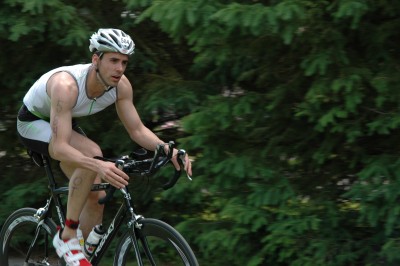Summer Intervals – Can you REALLY do them outdoors?
 Having spent 7 of the last 8 winters on indoor trainers along with a large number of coaching clients, I’d face the same dilemma every year when the weather improved – do I shift my training outdoors or do I maintain my indoor consistency and regimen?
Having spent 7 of the last 8 winters on indoor trainers along with a large number of coaching clients, I’d face the same dilemma every year when the weather improved – do I shift my training outdoors or do I maintain my indoor consistency and regimen?
And while it’s been said that he who has choice has torment, I was previously spared this grief as my decision was made for me since indoor, power-based coaching wasn’t only my training method but my profession and primary source of income. And so I watched, as season after season the same pattern emerged in those riders who maintained their indoor training once, twice, even three times weekly as compared to those who chose to do their intervals outdoors.
Telltale Signs
The first indication of deteriorating fitness was visible in the halfhearted “confidence” I’d recognize when talking to my winter warriors prior to outdoor training races or weekend rides. I’d ask them how their training was going, and while I suspect the occasional rider would baldly lie to me in fear of incurring my gentle ridicule – yet knowing this lie would soon be evident not long after the race or ride commenced and a very public light shone down upon his waning fitness – most would only shrug and offer the same, “Well, I’ve kinda just been riding” reply that became plainly evident when the disappointing indications of performance decline were on full display over the course of the ride or race.
Harder still was watching as these riders along with their fitness declines were left behind as many other riders left them and their winter peak fitness literally in their dust, never to see them again unless they had the misfortune of getting lapped during a criterium or circuit-style ride.
Is This You?
Is this true for every rider who decides to shift her training outdoors? Definitely not. Plenty of them understand what it takes to stay sharp, and better still, continue to build their fitness toward properly timed peaks. These riders, however, are in the minority and many of them have hired personal coaches. So this is not as much a recommendation to continue training indoors as a sincere bit of advice encouraging all riders who gutted out some brutal, consistent, & structured indoor workouts: Honestly assess how much discipline your potential training independence requires and determine if you alone are capable of such self-control. Put another way, can you keep yourself on track? Do you have the motivation, the training knowledge, the support system?
For most riders, the answers to these questions are moot because indoor training severely pales in comparison to the outdoor experience we long for during stretches of often harsh, occasionally unbearable and almost always demotivating weather.
So who can blame any rider for ditching their indoor suffering for the promise of those first few rides in shorts & jerseys minus the layers of clothing necessary only weeks earlier? Who can be fairly criticized for wanting to reap the rewards of all their indoor contrition? Not me, but I’m here to tell you that a balance between outdoor enjoyment and indoor training can be struck.
Indoor vs Outdoor: Quality Sessions
Consider the quality of intervals done on a trainer with very specific wattage targets displayed before you, with instant feedback in the form of as many metrics as your hypoxic brain can make sense of, without the distraction of all things outdoor riding includes, e.g. varied wind conditions, cars, stoplights, ever-changing road surfaces, etc. And while I do recognize that eventually your fitness will have to be transitioned to the outdoors where it will be applied during races, events, and group rides, I’m still hard pressed to acknowledge that outdoor intervals are as productive as those done indoors.
So why not maintain your interval schedule indoors thus ensuring 2-3 high quality workouts each week? Many riders even swap a mid-week training race for an interval session and further reduce their indoor sessions to just 1-2 per week with a high level of training adaptation and improved fitness over the course of the competitive season.
Performance Upkeep
Once that fitness (capacity) is built, it’s only a matter of maintaining or sharpening (power work) your fitness while applying your hard-fought gains to your events. Often the most highly dedicated, successful and performance-driven riders will work out indoors a couple times each week, if not more, throughout the entire year except perhaps during their transition periods. So why not you?